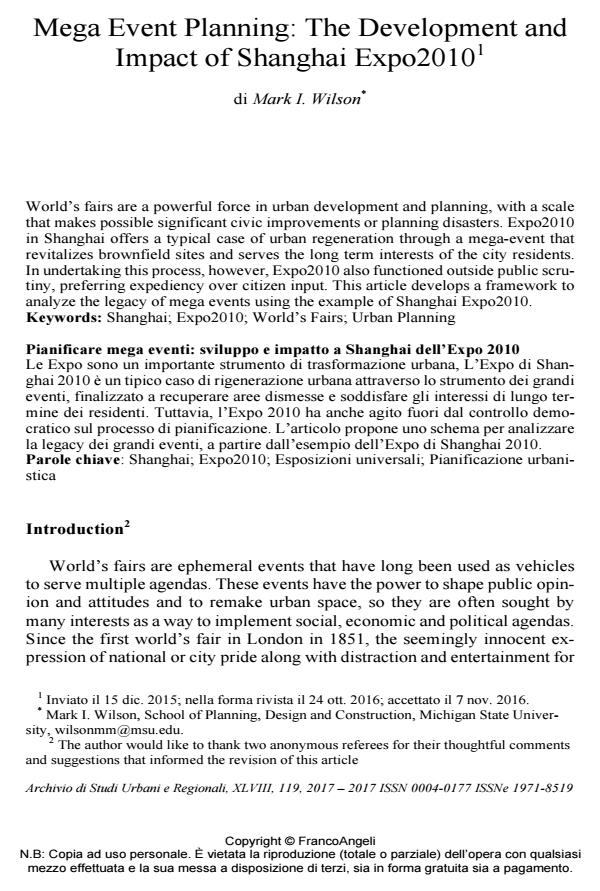Mega Event Planning: The Development and Impact of Shanghai Expo2010
Journal title ARCHIVIO DI STUDI URBANI E REGIONALI
Author/s Mark I. Wilson
Publishing Year 2017 Issue 2017/119
Language English Pages 19 P. 139-157 File size 332 KB
DOI 10.3280/ASUR2017-119009
DOI is like a bar code for intellectual property: to have more infomation
click here
Below, you can see the article first page
If you want to buy this article in PDF format, you can do it, following the instructions to buy download credits

FrancoAngeli is member of Publishers International Linking Association, Inc (PILA), a not-for-profit association which run the CrossRef service enabling links to and from online scholarly content.
World’s fairs are a powerful force in urban development and planning, with a scale that makes possible significant civic improvements or planning disasters. Ex-po2010 in Shanghai offers a typical case of urban regeneration through a mega-event that revitalizes brownfield sites and serves the long term interests of the city residents. In undertaking this process, however, Expo2010 also functioned outside public scrutiny, preferring expediency over citizen input. This article develops a framework to analyze the legacy of mega events using the example of Shanghai Expo2010.
Keywords: Shanghai; Expo2010; World’s Fairs; Urban Planning
Mark I. Wilson, Mega Event Planning: The Development and Impact of Shanghai Expo2010 in "ARCHIVIO DI STUDI URBANI E REGIONALI" 119/2017, pp 139-157, DOI: 10.3280/ASUR2017-119009